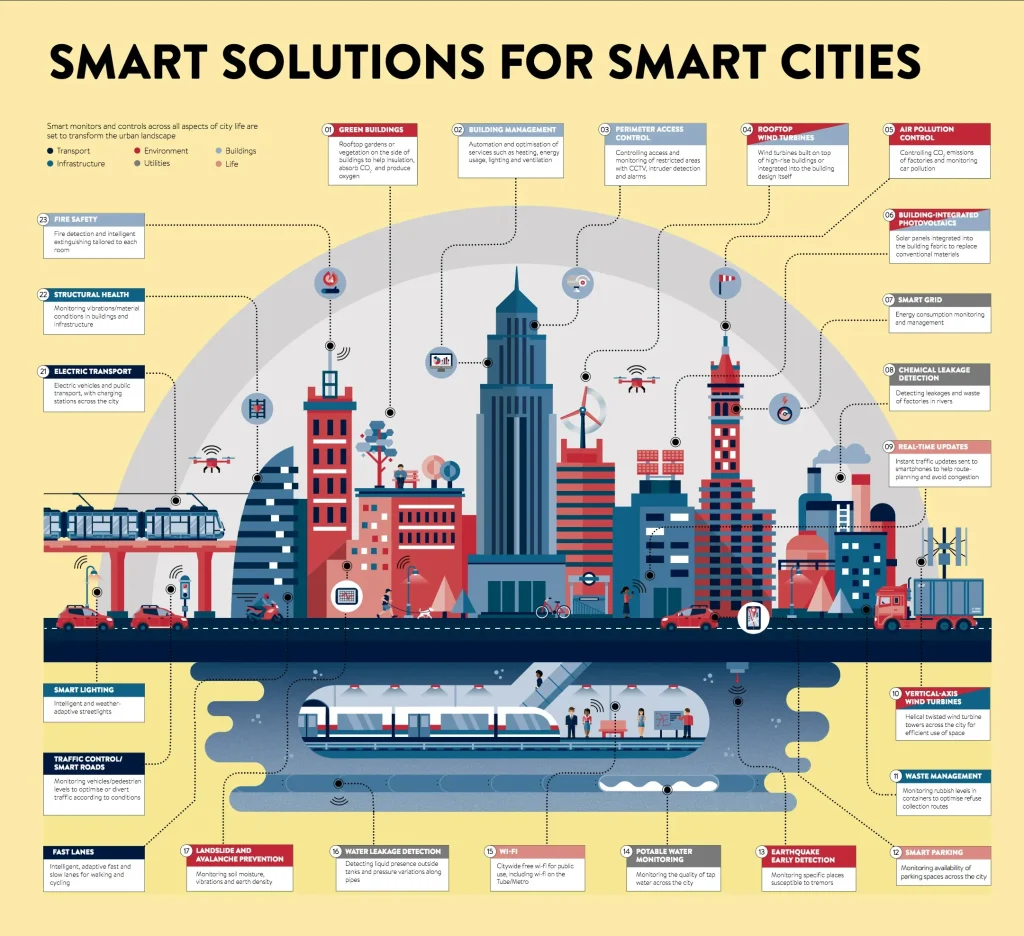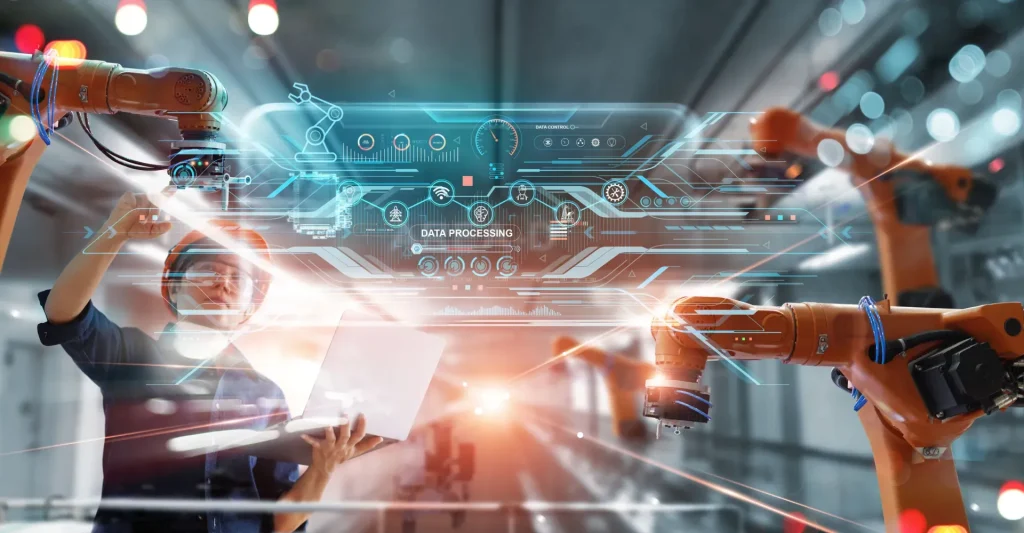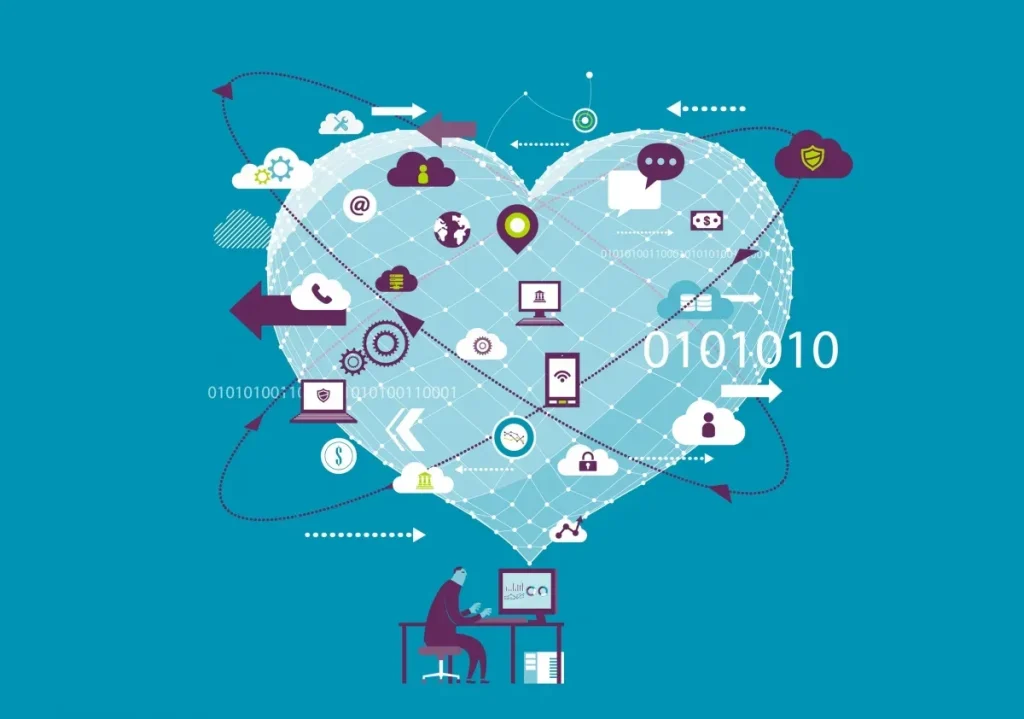Smart Cities are not a distant dream but a practical, evolving approach to urban living that blends people, policy, and technology to create more efficient, resilient, and livable cities. This movement merges governance, citizen engagement, and digital innovation to reshape how we plan, operate, and grow in ways that respond to real-world conditions. By weaving urban technology with IoT city infrastructure into everyday services, cities can ease traffic, improve air quality, optimize energy use, and deliver timely public services. The approach also emphasizes sustainable urban development, data-driven urban planning, and the use of digital twins for city planning to test ideas before committing resources. As governments, businesses, and residents engage, the result is smarter infrastructure, better decision-making, and a higher quality of life for people across diverse neighborhoods.
Viewed through the lens of connected urban systems, the idea shifts from standalone gadgets to a holistic civic technology ecosystem that informs policy and empowers residents. Cities deploy intelligent networks, sensor-rich infrastructure, and interoperable platforms that translate data into practical services, from adaptive lighting to real-time transit guidance. This urban data ecosystem relies on predictive analytics, digital twins for scenario testing, and participatory governance to anticipate needs and reduce waste. By treating the city as a living model—continuous, data-driven, and adaptable—planners can simulate outcomes, test interventions, and invite communities to shape the future. In this language of urban intelligence, the focus remains on efficiency, resilience, equity, and inclusive growth for all residents.
Smart Cities: Integrating IoT City Infrastructure for Sustainable Urban Development
Smart Cities rely on urban technology and IoT city infrastructure to connect streets, buildings, and utilities. Real-time sensors, networks, and analytics transform raw data into better services, from smarter street lighting to optimized bus routes, supporting sustainable urban development and cleaner, more efficient neighborhoods.
With data-driven urban planning, cities turn everyday measurements into evidence that guides policy and investment. Edge computing and secure cloud platforms enable scalable insights while protecting privacy, ensuring governance keeps pace with growing populations and equity goals.
Smart Cities: Digital Twins for City Planning and Data-Driven Urban Transformation
Digital twins for city planning create dynamic, virtual replicas of neighborhoods, districts, and transport networks. Planners simulate new transit lines, zoning changes, and green space investments before construction, reducing risk and accelerating informed decisions.
By linking digital twins with data-driven urban planning, cities test climate resilience, emergency response, and mobility scenarios using live feeds from IoT city infrastructure and urban technology. This integrated approach aligns investments with measurable outcomes, supports transparent governance, and advances sustainable urban development.
Frequently Asked Questions
In Smart Cities, how do urban technology and IoT city infrastructure enable sustainable urban development?
Smart Cities deploy urban technology—sensors, networks, edge computing, and analytics—through IoT city infrastructure to collect real-time data on energy, traffic, air quality, and water systems. This data informs operations, enabling optimized transit, efficient street lighting, and proactive resource management, which together advance sustainable urban development. With privacy protections and governance in place, data-driven urban planning becomes transparent and accountable for residents.
What role do digital twins for city planning play in Smart Cities and data-driven urban planning?
Digital twins for city planning create dynamic virtual replicas of neighborhoods that simulate transportation, zoning, and climate impacts. In Smart Cities, they let planners test scenarios, compare outcomes, and allocate resources more efficiently before construction begins. By integrating data from IoT city infrastructure and other sources, digital twins support data-driven urban planning with evidence-based insights and faster, more transparent decision-making.
| Aspect | Key Points |
|---|
| Definition | - Smart Cities blend people, policy, and technology to create more efficient, resilient, and livable cities.
- Couples digital innovation with urban design to solve everyday challenges.
|
| The Technology Backbone | - A Smart City is built on a robust technology backbone that connects devices, data, and decisions.
- Urban technology weaves together sensors, networks, platforms, and analytics to turn raw measurements into actionable insights.
- The IoT city infrastructure — a network of connected devices embedded in streets, buildings, and utilities — collects data on traffic flow, energy consumption, environmental conditions, and public safety.
- When this data is channeled through secure, scalable systems, city operators can optimize bus schedules, adjust street lighting in real time, monitor water networks for leaks, and forecast demand before bottlenecks occur.
- The role of sensors and connectivity cannot be overstated. From traffic cameras to air-quality monitors and smart meters, these instruments create a rich stream of information that informs municipal decisions. Edge computing, cloud services, and robust cybersecurity frameworks ensure that data is processed quickly and protected from threats. The result is an ecosystem where services respond to real-world conditions with speed and precision, delivering tangible benefits to residents and businesses alike.
|
| Digital Twins for City Planning | - A digital twin is a dynamic, virtual model of a city or district that mirrors real-world conditions.
- City planners and engineers can simulate scenarios—such as new transit lines, zoning changes, or green space expansions—before any physical work begins.
- This capability reduces risk, helps allocate resources efficiently, and supports evidence-based decision-making.
- Digital twins enable continuous learning. Planners can run thousands of simulations to understand climate events, pedestrian flows, or micro-mobility impacts, providing a holistic view that traditional methods often lack. The payoff is faster, more transparent decisions that stakeholders can trust.
|
| Data-Driven Urban Planning and Analytics | - Data-driven urban planning is the compass guiding Smart Cities toward measurable outcomes.
- Analytics turn raw data from IoT city infrastructure into insights that inform policy and investment.
- With strong governance and privacy protections, cities can analyze trends in travel, energy use, and service requests to identify inefficiencies and prioritize improvements.
- This approach includes predictive analytics, scenario planning, and performance dashboards that track key indicators like commute times, air quality, and access to green space, tying metrics to programs and budgets to demonstrate cause-and-effect and justify funding.
|
| Sustainable Urban Development, Mobility, and Resilience | - Sustainable urban development emerges when technology helps curb carbon footprints, conserve resources, and improve livability with equity.
- Mobility is a central pillar: integrated transit apps, adaptive signals, and real-time route guidance can reduce congestion and encourage walking, cycling, and transit use.
- Smart parking solutions, shared mobility programs, and freight optimization further reduce emissions and improve quality of life.
- Resilience is vital: digital tools enable early warning, rapid response, and post-event recovery planning, helping cities absorb shocks and rebound quickly.
|
| Governance, Inclusion, and Public Trust | - Governance should be transparent, with robust data privacy protections and equitable access to services.
- Equity requires universal access, digital literacy programs, and inclusive service design, plus public dashboards and participatory planning to maintain transparency.
|
| Case Studies and Practical Scenarios | - Cities experiment with configurations of Smart City technology, such as IoT deployment across streetlights, traffic sensors, and water meters; digital twins for transit planning; open data initiatives guiding housing and air quality improvements.
- The common pattern is to start with a clear objective, collect relevant data, test in a safe environment, and scale successful pilots. Interoperable standards, data governance, and ongoing citizen engagement are key to success.
|
| Implementation Blueprint: From Vision to Reality | - Define a shared vision and measurable goals tied to sustainability, resilience, and equity.
- Build an interoperable technology stack with open standards to avoid vendor lock-in.
- Invest in IoT city infrastructure with a focus on reliability, security, and privacy, prioritizing water, energy, transportation, and public safety.
- Develop a data governance framework with stewardship, privacy protections, and access controls while enabling responsible data sharing for innovation.
- Start with high-impact pilots that are scalable and low-risk.
- Engage communities to ensure services meet real needs and reflect local values.
- Plan for workforce and skills development in data analytics, cybersecurity, and smart infrastructure.
- Secure sustainable funding through public budgets, private investment, and grant programs.
- Measure, learn, and iterate using data to monitor progress and share lessons with other cities.
|
| Challenges, Risks, and Ethical Considerations | - Privacy concerns, cybersecurity risks, and the potential for widening the digital divide must be addressed proactively.
- Public trust hinges on transparent data practices, clear consent mechanisms, and visible benefits for residents.
- Funding constraints can slow progress, especially for smaller cities; a phased approach, public-private partnerships, and grant funding can help overcome barriers.
- Ensuring digital inclusion is essential; programs that provide affordable connectivity, devices, and digital-literacy training help ensure broad participation.
|
| The Road Ahead: Evolving Urban Futures | - As technology matures, Smart Cities become more capable and integrated into daily life.
- The future may bring more autonomous mobility, smarter energy networks, and increasingly accurate city models that forecast outcomes with high precision.
- The ongoing challenge will be to balance innovation with ethics, privacy, and equity to ensure an inclusive and sustainable urban future for all.
|
Summary
Smart Cities describe a holistic urban vision where technology, data, and thoughtful design come together to create healthier, more efficient, and livable cities. By leveraging urban technology, IoT city infrastructure, and data-driven urban planning, cities can reduce waste, improve services, and respond more effectively to residents’ needs. Digital twins for city planning offer a powerful tool for testing ideas before committing resources, while sustainable urban development and resilience guide decisions toward long-term benefits. As governments, businesses, and communities collaborate, the urban future grows closer to reality: Smart Cities enabling a higher quality of life for all citizens, today and tomorrow.




